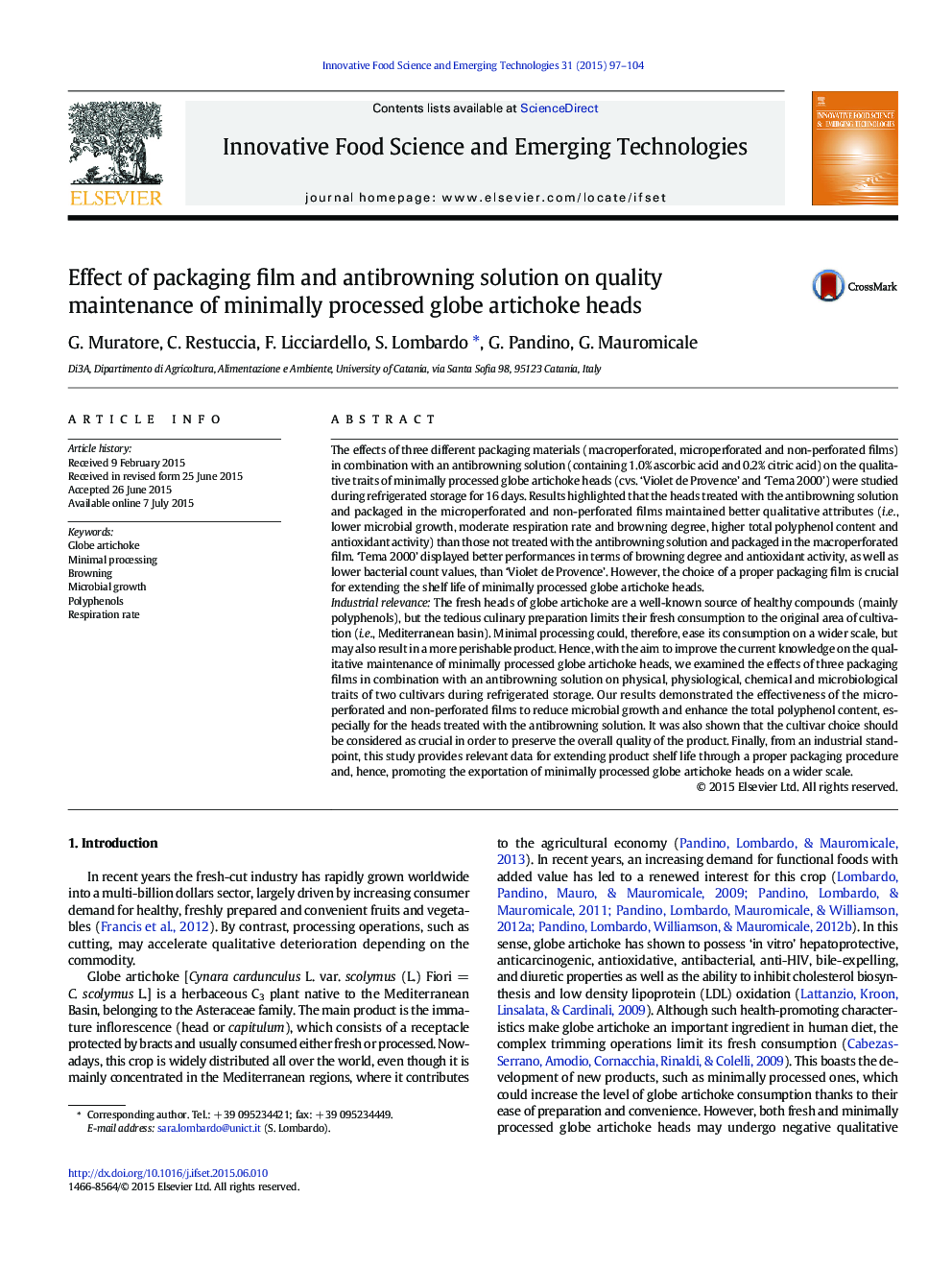| Article ID | Journal | Published Year | Pages | File Type |
|---|---|---|---|---|
| 2086288 | Innovative Food Science & Emerging Technologies | 2015 | 8 Pages |
•Antibrowning treatment and microperforated or non-perforated films preserved the quality of minimally processed artichokes•‘Tema 2000’ had lower browning degree and bacterial counts than ‘Violet de Provence’•Both cultivars were prone to be minimally processed due to their high antioxidant activity
The effects of three different packaging materials (macroperforated, microperforated and non-perforated films) in combination with an antibrowning solution (containing 1.0% ascorbic acid and 0.2% citric acid) on the qualitative traits of minimally processed globe artichoke heads (cvs. ‘Violet de Provence’ and ‘Tema 2000’) were studied during refrigerated storage for 16 days. Results highlighted that the heads treated with the antibrowning solution and packaged in the microperforated and non-perforated films maintained better qualitative attributes (i.e., lower microbial growth, moderate respiration rate and browning degree, higher total polyphenol content and antioxidant activity) than those not treated with the antibrowning solution and packaged in the macroperforated film. ‘Tema 2000’ displayed better performances in terms of browning degree and antioxidant activity, as well as lower bacterial count values, than ‘Violet de Provence’. However, the choice of a proper packaging film is crucial for extending the shelf life of minimally processed globe artichoke heads.Industrial relevanceThe fresh heads of globe artichoke are a well-known source of healthy compounds (mainly polyphenols), but the tedious culinary preparation limits their fresh consumption to the original area of cultivation (i.e., Mediterranean basin). Minimal processing could, therefore, ease its consumption on a wider scale, but may also result in a more perishable product. Hence, with the aim to improve the current knowledge on the qualitative maintenance of minimally processed globe artichoke heads, we examined the effects of three packaging films in combination with an antibrowning solution on physical, physiological, chemical and microbiological traits of two cultivars during refrigerated storage. Our results demonstrated the effectiveness of the micro-perforated and non-perforated films to reduce microbial growth and enhance the total polyphenol content, especially for the heads treated with the antibrowning solution. It was also shown that the cultivar choice should be considered as crucial in order to preserve the overall quality of the product. Finally, from an industrial standpoint, this study provides relevant data for extending product shelf life through a proper packaging procedure and, hence, promoting the exportation of minimally processed globe artichoke heads on a wider scale.
